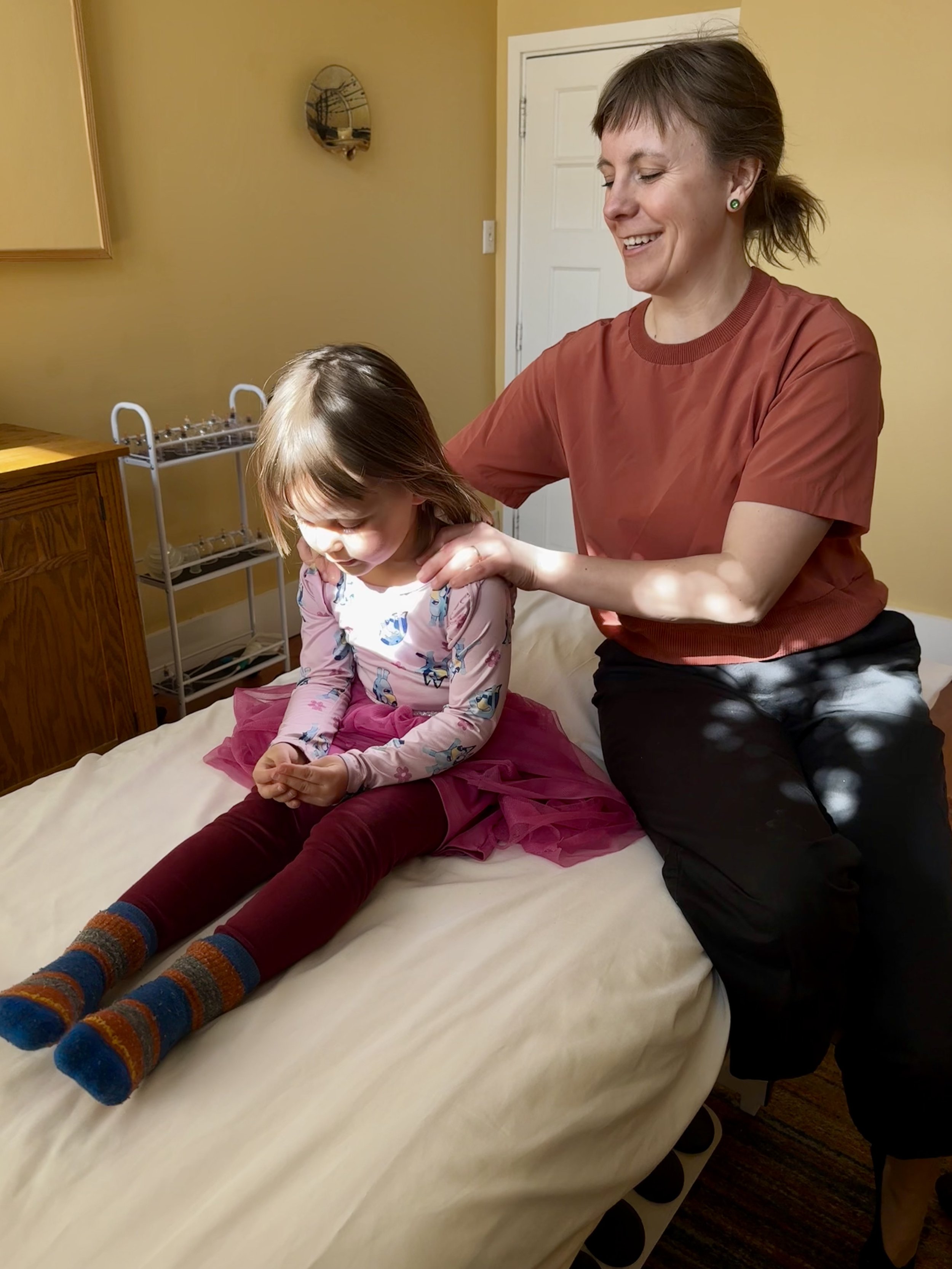What is Osteopathy?
You might wonder - what even is osteopathy? Most people haven’t heard of it.
It’s a common question! With so many health care terms, it’s important to understand what’s similar and different about various professions and designations.
What Is Osteopathic Medicine? What is OMT?
Osteopathic medicine is a term to describe any care provided by a DO, or doctor of osteopathic medicine. A DO is similar to an MD (medical doctor) in that both types of physicians graduate from 4-year medical school, and have additional training in post-graduate residency programs. We are all licensed physicians and have the legal authority to make diagnoses and treatments.
DOs have extra training in Osteopathic Manipulative Treatment (OMT), which is a way to use the hands to diagnose illness, injury, and encourage the body’s natural tendency toward self-healing. DOs who practice OMT have a highly trained sense of touch to feel subtle changes in tension and tissue quality throughout the whole body.
OMT can help patients with asthma, sinus infections, respiratory infections, migraines, infant feeding trouble, depression/anxiety, and more. OMT can also be used to prevent disease by optimizing balance and health of the fascia.
OMT does not use protocols. All treatment is personalized. Each treatment is unique, designed according to your current physical and mental state.
What OMT isn’t:
Osteopathic Manipulative Treatment (OMT) often gets confused with chiropractic, craniosacral therapy, or physical therapy. There are many ways these philosophies and practices overlap. I have deep respect for practitioners from all backgrounds, and firmly believe knowledge is not limited to one kind of education over another.
What I bring, that I believe is unique, is the full-scope of a physician. I have education in anatomy, physiology, surgery, obstetrics, pathology, epidemiology, public health, human development, and bring this broad perspective when I consider you as an individual. Perhaps most importantly, I have a deep well of experience caring for people in all stages and walks of life. I have developed an intuitive sense of how the body functions, and the consequences of dysfunction. I have helped babies come into the world and have been with people as they breathe their last breaths. I have witnessed deep suffering and expansive joy. I feel these experiences powerfully impact the care I provide.
How Can Osteopathy Help Me?
OMT is a way to promote optimal symmetry and flow through the body. Through gentle, hands-on treatments, I will help optimize blood flow, lymphatic flow, bone and muscle alignment, and release strains of the fascia or connective tissue. OMT can be used as part of a treatment plan for any illness or infection.
As an example - I often use OMT to help people with upper respiratory infections. During a respiratory infection (like pneumonia or bronchitis) there is congestion in the lymphatic system, there is asymmetry in the ribs, there is a mismatch between sympathetic and parasympathetic inputs to the body. Through OMT we can optimize your body’s symmetry, balance, circulatory function, and use the body’s ability to heal itself to prevent progression of the infection.
We also live in a world full of chronic stress and unrealistic pressures. We are always on the go - always feeling behind. OMT is a way to help support your nervous system relax and find balance, supporting you as you find your path to groundedness.
History of Osteopathy
Osteopathy was developed in the late 1800s. The founder of osteopathy, Dr. A.T. Still, was a physician who was disappointed and disillusioned with the common medical practices of his time, which he felt were often unhelpful at best and harmful at worst. Tragically, he lost his wife and three children to bacterial meningitis, and felt there must be a better way to do medicine. Through careful study and observation, he realized he could help people improve their heath and wellness with only his hands. He started the first school of Osteopathy in 1892 with 21 students, including 6 women.
A.T. Still’s life encompassed a wide range of experiences, as farmer, hunter, inventor, physician, abolitionist, surgeon, legislator, author, father, and husband. He had a deep respect for nature and was one of the first western physicians to fully appreciate the body’s ability to heal itself. As a young person he spent time with the Shawnee tribe of indigenous people and incorporated aspects of their traditional bodywork into what would later become osteopathy.
Like many other instances of cultural appropriation, he did not credit the Shawnee tribe for sharing their knowledge, and the origins and lineage of osteopathy are not routinely taught in medical schools. Osteopathy is the root of several traditions of bodywork including chiropractic and craniosacral therapy, all which do not formally acknowledge their lineage. Millions of people have benefitted from this knowledge without proper acknowledgement. Therefore I will donate 1% of her profits to the Shawnee Tribe.




